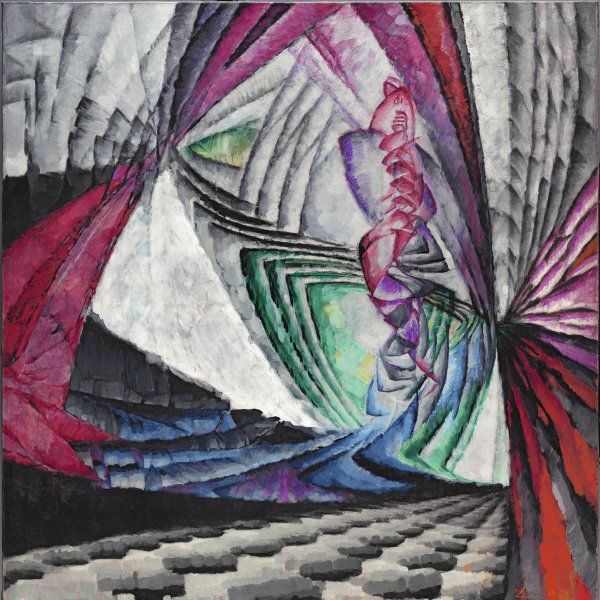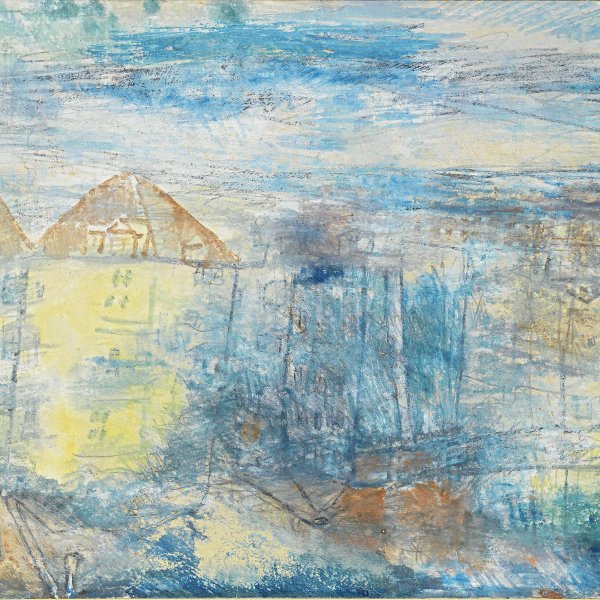Study for the Language of Verticals
Nowadays nobody disputes the pioneering role of František Kupka in abstract painting. In 1896 the Czech painter, who trained as an artist in Prague and Vienna, settled in Paris, where he earned his living as an illustrator for a time. He found the French capital to be a more suitable environment for developing his personal, non-objective vision of art, and as early as 1912 the Salon d’Automne exhibited his first totally abstract works with titles referring to shapeless forms and music, such as Amorpha. Fugue in Two Colors.
In the present Study for the Language of Verticals, which Serge Fauchereau defined as a “symphony of gloomy black and red basaltic organs, ” the dominant element is, as the title indicates, a succession of vertical lines which form a sort of backdrop positioned in parallel to the picture plane. Although Kupka may have drawn inspiration from the verticals of Gothic architecture, any resemblance to reality disappears when the idea is translated into painting. The repetitive vertical sequence interrupted only by a series of rhomboidal forms recalls a textile pattern. His abstraction, full of meanings and philosophical intents, comes close to music and the theories of the surge of energy that were so fashionable in his day. In an essay entitled La Création dans les arts plastiques of 1923 expounding his ideas on art as a mechanism for creating images on the fringes of nature, Kupka wrote: “There is in the vertical all the majesty of the static. It contains at once top and bottom, reuniting them, but dividing space horizontally. Repeated as a series of parallels, the vertical expands horizontally in tense and dumb anticipation.”
Paloma Alarcó









